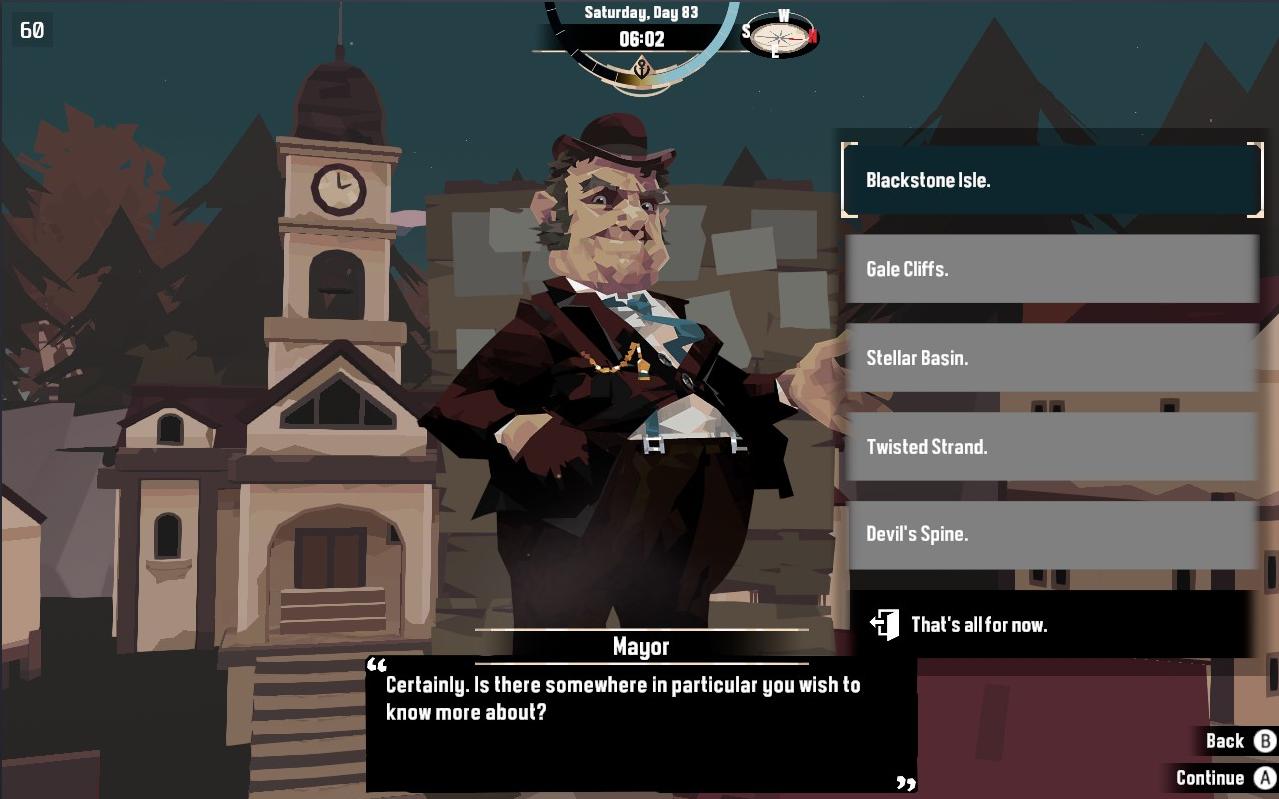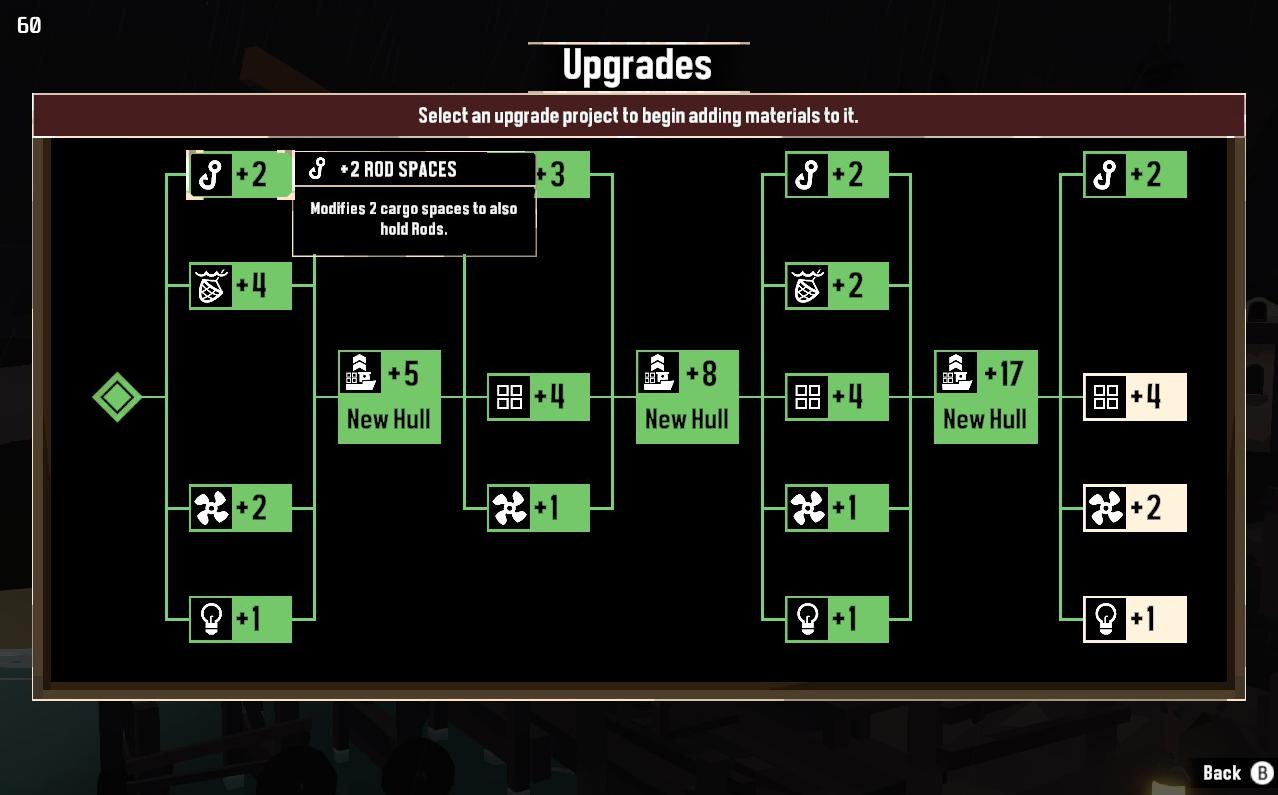Dredge: Impressions After 10 Hours at the Wheel (on the Steam Deck)
I have been spending more than 10 hours on Dredge by now, and while the game is only planned to release at the end of March 2023, this is probably as close to a real review that this will get, unless there’s a big surprise by then. I had the chance to stumble upon it during last year’s Steam Next Fest (check out our article), and since then I was monitoring any news about it - turns out I could enter the closed beta before release.
Dredge is about fishing stuff. You’d think, “oh, you mean fish?”, and you would not be wrong, at least at the beginning of the game. But you happen to be a fisherman who’s lost its way in the fog and ended up in a strange part of the world where people live in small harbors on remote islands, and are scared to venture on the seas, especially at night. You know, creatures and the like apparently disturb what should be a quiet ocean.
A chaotic beginning
Since your boat was damaged as you first arrived in the area, your first few steps are about paying back for the repairs offered in the small town you reached. And while you are at it, make money too - there’s no reason to leave free money on the table, right? This first few missions serve as an intro to the game and what it offers.

So you control your little boat, going around, trying to find fishing spots represented by disturbances on the surface of the water - when you are there, you can try to fish something, and it triggers a mini game where you have to press a button at the right time to accelerate the process.

Usually some kind of circular pattern, but depending on the type of fish, the pattern changes a little. Once you fish something, now you get to play some variation of Tetris, where you have to find how to make the fish fit in your hold. Some fishes have strange shapes and this is where you try to rearrange blocks just like in Tetris to make things fit.

At the beginning your boat is small and slow, and the days pass by fast. So as you go around fishing, if you are not careful, you will be surprised by nightfall. And you better avoid nightfall as much as possible, as dangerous encounters mostly occur at night. Nights are also very dangerous for more mundane reasons: you don’t see rocks next to the coast until the very last moment at night (brilliantly done graphically speaking), and hitting then can further damage your boat. And yes, you can die in the game, so you need to be extra careful.

You can see in the picture above some boxes piling up on the back of your boat as you bring more and more cargo back with you.
Once you make it back to the harbor, selling fish bring you money, and money can be used to repair your boat, and also upgrade it in many ways:
- buy new engines
- buy fishing rods (different rods enable fishing in deeper or different parts of the ocean)
- buy nets to catch fishes (passively, when moving around)
- buy crab traps (they provide a nice passive income as well, just come back and get them a few days later)
- buy lights to attach to your boat

How many parts you can buy depends on how much money you have, and how much research you have done. There is a tech tree that you can advance for each of the parts to enable better versions of each item. Progressing on the tech tree requires some “research parts” that you can collect during your journeys.
Even if you buy super advanced parts, you may not be able to install them on the boat. There are specific slots for putting nets, lights, fishing rods and other elements, and if you don’t have enough slots available, you cannot insert them in. To put such parts, you need to upgrade your boat using a shipwright which is available in a few locations - you’ll need piece of clothes, wood, and metal parts to do all of that, parts that can be found by salvaging junk in the sea, in areas where other ships have sunk before. This kind of upgrade takes a lot of time to complete, but ultimately makes your boat much more capable in the end.

More than just fishing
So, fishing gets you money, money gets you better parts, research parts unlocks new upgrades and is that it? That could get boring very quickly, so the game has a whole other layer built on these gameplay elements, with a main storyline and numerous quests to complete.

On every harbor, there are typically a few people you can interest with conversations in 2D - sometimes they just give you information, or request your help for something. For example, the fishmonger in the first harbor wants you to bring him some mutated fishes so that he can experiment with them. He think such fishes may have magical properties that have effects on humans as well… Then there’s these strange hooded people on other islands, part of some kind of cult, looking for a hand to finish the preparations for a rite. And what to think of this abandoned village where empty houses are just left, with a dog waiting on the shore? And there’s the strange man, isolated on a small island, asking you to collect some very specific items from all around the archipelago - for what purposes? In any case, he pays very well…
That’s just a few of so many characters and strange situations you will encounter as you venture on the map and start to investigate some peculiar spots. Do you really want to visit an area full of sunk vessels? Of course you do! You need to know why things turned this way! The game is a collection of questions, begging to be followed to their conclusion. There is never a mandatory road to follow, it’s always up to you to follow on the leads and the hints to make something out of it.
When you complete quests, you usually get something out of it, be it material, trinkets, money or research parts. A trader in another harbor can convert some of these items to actual cash when you are short of it. Since you move around a lot and your cargo is mainly for carrying fish, the game introduces the typical wonder storage box that is available in every harbor for you to access your other items. It’s a known trick in many games, but it is very useful at the end to prevent excessive back and forth.

The world is divided into 5 parts, the central part where you start, and 4 different sets of larger islands that have distinct looks and climates (you could call them biomes, I guess). In certain biomes you need special equipment to fish (next to the volcano, you need a volcanic-area compatible fishing rod), and there are some additional dangers that you did not encounter before. As you progress, there is a lot of back and forth needed between the different parts of the map to complete the quests, so this means you need a faster engine to cross the oceans safely within a day. Which is one motivation for money-making and upgrades.
The changes in biomes are very well made. You see progressively the sky and sea turn red as you approach the volcanic landscape. In a more paradisiac area, strange animals and plants glow at night under the sea in a beautiful way. But maybe you should not venture and look at these lights too long at night, for there are far worse dangers out in the dark in the area.
All in all, it’s very well designed and it ties things very well together. I especially like the fact that the game does not hold your hand with a constant GPS indicator to show you where to go next. Your map is small and cannot be zoomed, its markers are tiny, so most of the time you are not really sure where to go precisely or what you are looking for, which is great. The feeling of being a little lost is a great addition to the atmosphere of the game, it makes things harder and more stressful, which is expected in a deadly environment. The new dangers you face at night or in specific areas are surprising and scary the first time you see them, which makes for more adrenaline spikes!

Dredge has this “one more turn” click to it. It’s easy to tell yourself “all right, I will just play another day in the game” since it’s just 5 minutes and it can bring some meaningful, visible progress anyway. That’s basically why I ended up spending more than 10 hours on something that was supposed to be a preview in the first place.
The only thing that is kind of disappointing is the lack of other boats going around on the waters. If everyone lives in harbors, surely there should be more folks going around in boats to do their business? The game makes it look like you are (almost) the only ship still sailing around. It would feel a little more logical to have a few more folks cruising the seas, at least during the day when it’s less dangerous.
Steam Deck
It works perfectly with the Steam Deck, and it’s probably the ideal format for it. The text is properly set to be read, the performance is awesome even at low wattage, and as mentioned it’s very appropriate for short gaming sessions. A perfect fit. It should probably be rated as “Verified” when it gets tested by Valve or their partners.
While I have not finished Dredge yet, I can safely recommend it. Very enjoyable and addictive. The first good surprise of 2023!
